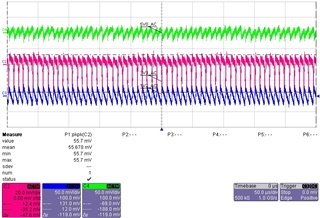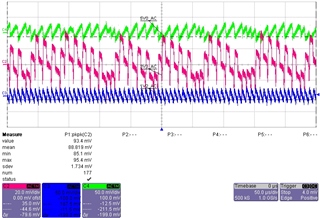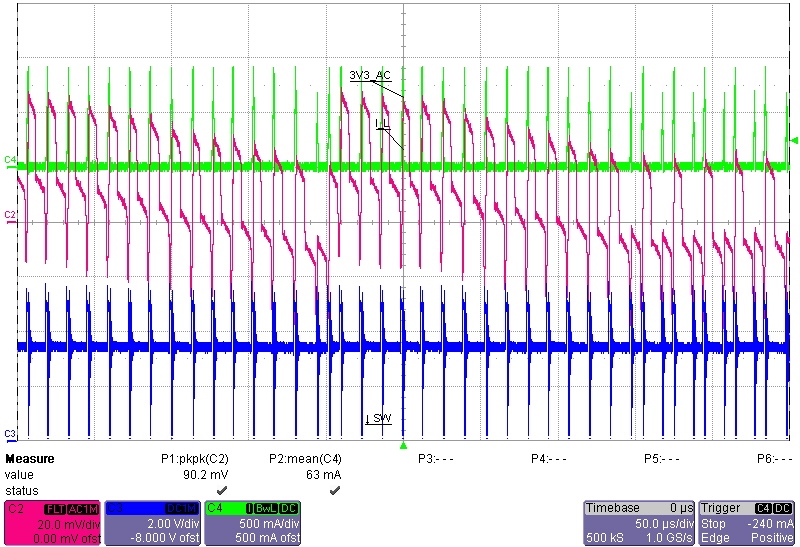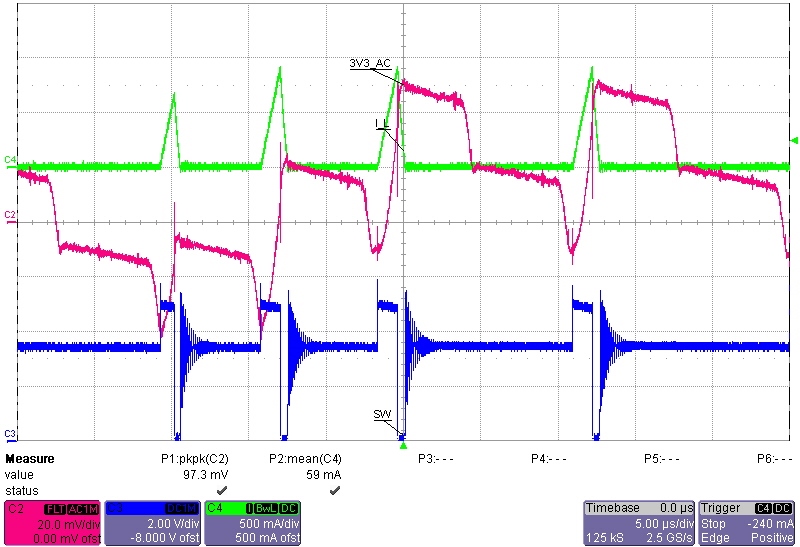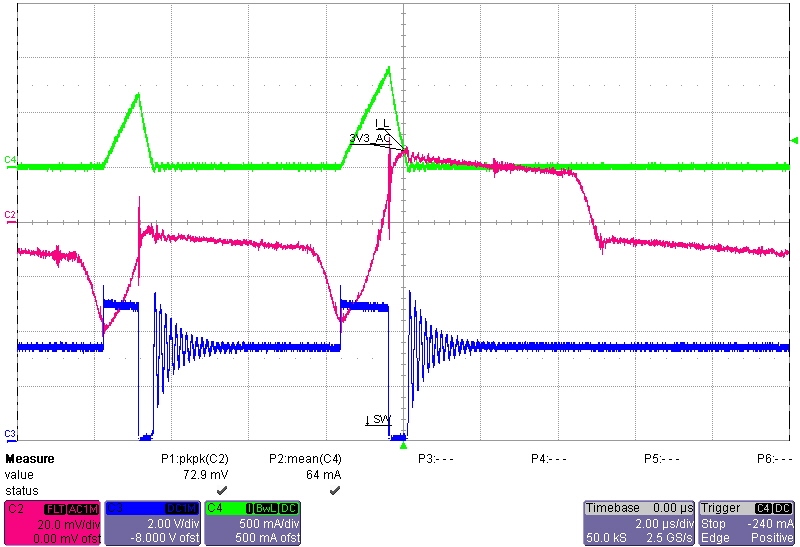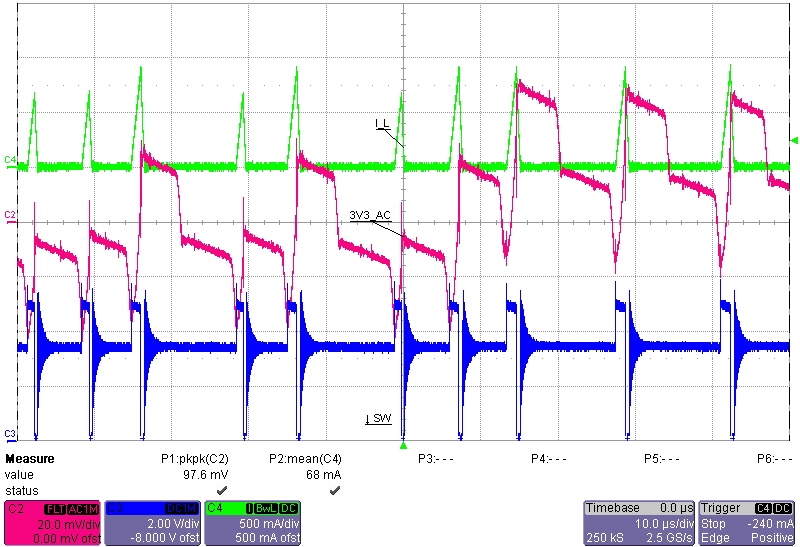Other Parts Discussed in Thread: TPS62A01
Hi all
Please review below questions / schematic / scope shots from my customer and comment.
Best regards
Ueli
-------------------------------------
We use two cascaded TLV62585P to generate 3.3V and 1.2V. See attached schematic. The 3.3V buck converter runs in PSM. (Iout = 50mA) We have multiple prototypes with same PCB revision and same components mounted, but we observe inconsistent ripple voltage waveforms.
Approximately half of the prototypes show consistent ripple voltage, with 50mVpp. (See attached measurement, NormalRipple.jpg, red line)
The other half shows inconsistent ripple voltage, with 100mVpp and very strange waveform. (See attached measurement, StrangeRipple.jpg, red line)
We've made measurements with various feed forward and output capacitor values. No significant improvement.
Any suggestions how to get a more consistent ripple voltage waveform?
Best regards,
Adrian

